 Attitude’s CompetitionPlus.com, with the assistance of a key group of Pro Modified historians and enthusiasts, has compiled a list of Top 20 all-time drivers based on their contribution to the class, historic achievements, statistics and fan appeal.
Attitude’s CompetitionPlus.com, with the assistance of a key group of Pro Modified historians and enthusiasts, has compiled a list of Top 20 all-time drivers based on their contribution to the class, historic achievements, statistics and fan appeal.
Starting on Friday, January 8, 2010, we began revealing the list, announcing two drivers per week, until the No. 1 driver was unveiled on during the ADRL Dragpalooza in Houston, Texas.
Attitude’s CompetitionPlus.com narrowed the list from hundreds of drivers down to 20.
#1 SCOTTY CANNON
Lyman, SC

NOTABLE ACCOMPLISHMENTS
• Six-time Pro Modified World Champion
• First Pro Modified Racer To Win Championship with Nitrous and a Supercharged combination
• 28 National Event Wins in 43 IHRA Finals

Scotty Cannon, arguably the most dominant Pro Modified driver ever, wonders if the competition will ever know how vulnerable he was in the early years of his fast doorslammer career.
With the help of a few friends, Cannon was able to bring out a new 1941 Willys at the 1989 IHRA Winter Nationals in Darlington, SC. The initial plan was to run a few races and call it quits.
Enter Doug Brown, owner of a satellite programming television guide OnSat, with a proposal for the obscure bracket racer from Lyman, SC.
“He told me to come up the next week and talk to them about getting a sponsor for the car,” recalled Cannon. “He fell in love with the car basically. He didn’t fall in love with me that’s for sure. I had no idea. It was a shock to me, my family, and everybody. From that day on, we just started racing. I did okay that year, I didn’t set the woods on fire but I wasn’t a back-burner guy either.”
Brown would provide the perfect platform for Cannon’s ramp up to stardom.
The same year Brown signed Cannon to a reported $30,000 a year sponsorship, the future world champion delivered two national event wins and a Quick Eight victory. Incredibly the Quick Eight and one of his Top Sportsman triumphs came during the same weekend, the first time any driver had pulled off such a feat.
When Pro Modified came around in 1990, Cannon and Brown jumped into to the fledgling professional division with both feet. The OnSat team reached the final round in one national event and by the season’s end held the class record.
Cannon and then engine builder Gene Fulton spent many hours working and testing until they had the upper-hand.

“I worked at Fulton’s shop nearly every day and if there were eight days in a week I was down there all eight of them,” explained Cannon. “We worked on nitrous and nitrous and nitrous and we worked on motors. Naturally he was the brains and I was the flunky, the guy who was learning.
“I remember going down there day in and day out … day and night … flowing nozzles, flowing this and flowing that. I’ll never forget stumbling on a little nitrous stuff which is no good at this day and time, but the car starting running better. It started running really good, it was hurting the motor but I was getting a little bit more help from everybody and they saw a little promise and the next year turned out pretty good.”
Pretty good for Cannon equaled a world championship, followed by another, and another, and for good measure a fourth. Cannon not only became the first two-time champion in the class but also the first third and fourth for good measure.
It would be easy to give the lion’s share of the credit to Cannon, but he’s always believed his supportive cast of tireless workers made the difference in his success.
“I had a good crew,” said Cannon. “I always started with the same ones, there might have been a fill-in guy or a part-time guy come in and leave; but my main guys always stayed. You have to have all of them. I get the credit, and at the end of the day, I won all the championships, and it was good for me but I was blessed. If I didn’t have the crew and the sponsors and stuff behind me this never would have happened.”
And then there’s Cannon’s belief fate had an investment in his future.
“If Doug Brown wouldn’t have walked up and why he went to the race in ‘90 I have no idea, I probably wouldn’t be sitting here as a six-time champion. Or, maybe I could have had a bigger sponsor and won more championships. Who knows? I don’t know but I wouldn’t take any of it back for the way we did it. I like the way it happened.”

The way it happened is Cannon achieved success in nearly every conceivable combination available for the first eight seasons of Pro Modified’s existence. He won with a nostalgia car, a modern car, a nitrous engine, a supercharged program, flamed or un-flamed, four-link or swing-arm. The bottom line is Cannon had a propensity of being a leader.
Cannon rarely experienced a weekend off during the course of a season, competing on the non-traditional racing weekends of Easter and Mother’s Day. If you were a track owner and had the cash, and wanted to book Cannon in for a match race, he was there and more than ready to snag your track record, no matter how much of a death-trap your strip was.
On some nights, Cannon established track records at facilities where it wasn’t safe to open the door while backing up from burnouts because the tracks were so narrow the Armco guardrails would rip the door off.
Cannon is adamant he did what it took to survive, but today, he looks back on those experiences and wonders what in the world he was thinking.
“That’s how I made my living,” Cannon admitted. “I raised both of my boys and my family. I know one year we did fifty-four races in one year counting the eight or nine IHRA races. I always did forty. I remember one Fourth of July doing five races in one week. Not one month, one week, all of them within about four or five hours apart of each other.
“We were going faster than the track had ever been because we set a lot of track records. But at this day and time we weren’t really running that fast. This day and time to go back to those tracks with the power you can make – it would almost be foolish, it would be a death wish. You just can’t do it.”
The experience, Cannon relates, also made him a better driver on the big stage with better conditions. His domination led to accusations of cheating, accusations he took very personal early on. Later he developed a thicker skin and the importance of pointing out to his skeptics why he was whipping them on a regular basis.

“At the time I didn’t really realize it was helping me as much as it was,” said Cannon. “We were doing what we needed to do to pay the bills, freshen the motors, put food on the table for the kids and make everything happen. But as time went on I could see that a couple of my interviews, after I won a few championships, I was under some scrutiny from a couple of the other racers.
“I allowed myself to get caught up in some of the fussing. Today I look back on it and now it’s like a fight with an old girlfriend, what did I even do it for? But I remember telling a guy, who’s a good friend of mine, ‘I don’t see how you expect to beat me and my team, you sell cars for a living and you come out and play in your play toy, I drag race every day and every week for a living. What makes you think you’re supposed to beat me? Your money’s not going to beat me, because I’ve got the same stuff you got.”
Eventually Cannon received the opportunity of a lifetime, a chance to race a fully-funded, NHRA championship capable fuel Funny Car. Having captured nearly every attainable accolade the Pro Modified class had to offer, Cannon walked away from the class as the winningest driver.
Twenty-one years after wondering whether he’d make it past the first couple of events, the tough-as-nails Cannon admits he gets a little teary-eyed when he is considered the greatest-ever Pro Modified.
“It’s an honor and makes me feel good,” said Cannon. “But when you get a kid or a lifetime fan, it chokes you up some inside and you feel the tears welling up. You know they don’t have a clue how hard it took to get to this point. You know what you went through to do it and they respect you so much at a higher level, and they know it but they don’t know it.”
“We put in a lot of work and I had so many good people surrounding me, I had Boyce Boswell and Darrell Makins and none of these guys were getting paid. It was the start of a dream that no one knew was ever going to happen. As we prospered, started making money and got better sponsors naturally everyone started getting paid. But when it all started it was like dominoes, they had to fall in the right direction. We didn’t know it at the time. There were a bunch of times were we were at a dead end road and never knew it, never saw the stop sign and ran right through it and kept going, looking back on it now. I don’t think in this day and time it would be wise to do what we did.”
Knowing the end results, Cannon would defy wisdom all over again.
#2 SHANNON JENKINS
Tuscaloosa, Ala.

NOTABLE ACCOMPLISHMENTS
• Four-time World Champion [IHRA/NHRA]
• Winningest Pro Mod Driver Ever
• Only Driver to Hold Simultaneous Titles [IHRA/NHRA]
Shannon Jenkins was content being a bracket racer and then he saw his first Pro Mod car. The sight of this fast doorslammer, purging the nitrous, shifting  the Lenco and covering every square inch of the Alabama drag strip from side-to-side was enough to draw him in for a closer look.
the Lenco and covering every square inch of the Alabama drag strip from side-to-side was enough to draw him in for a closer look.
That evening, Jenkins was partnered up with successful hometown [Tuscaloosa, Ala.] businessman Norman Estes on a bracket car and during the $10,000-to-win bracket event, Estes suggested, “You know those things look like they’d be a lot of fun.”
The easy going Jenkins concurred, “Yep, I think they would be.”
Who would have ever believed such a simple exchange would lead to one of the most storied careers in the history of Pro Modified racing?
One person did. Jenkins.
“Racing has been a passion of mine since I was nine years old,” said Jenkins, who finished third in his first full season of Pro Modified in 1994.
“Everything I’ve ever done all my life I have put 110-percent in it. Racing has been very good to me. It’s something I love to do. I love it (now) as much as I did back in 1990.”
It didn’t take long for the resourceful and innovative Jenkins to rise to the forefront of nitrous tuning and driving. There were no arguments about his status as king of the nitrous tuners when just one year after driving to four finals in his first full season, he stepped out of the car and tuned Tommy Mauney to the 1995 championship.
Two years later, he drove to a championship of his own.
Two years after the first title, he drove his way to a second.
Those were the only times from 1991 until 1999 that a driver other than Scotty Cannon won a title.
Jenkins came in and picked a drag racing fight with the biggest name in the class. The end result was always a clash of the titans featuring the top runners in each of their respective combinations.
“Scotty was a very good racer and so were we,” said Jenkins. “When you matched two bulls up like us, the end result was a rivalry. His drive to win a championship was equal to mine.”
While their championship runs looked effortless, the truth is both worked their fingers to the bone behind the scenes. For Jenkins, he had no other choice. Not only was he challenging the champion, but a gaggle of other nitrous racers who wanted to be in his perch atop the nitrous mountain.
“You might be on top of this class at one time, but it’s not easy to stay there,” Jenkins admitted. “The only place I know to be is on top in nitrous racing. I don’t know any other place to be. You’ll have to work a lot of years and put in a lot of hours before you are going to get me down.”
Jenkins has proven his worth over the years but never did his value become more evident than when he joined forces with Mike Castellana almost a decade ago. What started out as a engine lease relationship has become so much more.
“I have to say one of the defining moments in my career was joining up with Mike Castellana,” Jenkins said. “Mike is one of those guys who is not only a good driver but a great person to be around. Mike is a champion inside and outside of the car. He certainly understands the value of racing the right way. We’ve been together for the last ten years, but we’ve had so much fun that it hardly seems like it has been that long.”
Together Jenkins and Castellana have won a combined three championships including an incredible 2002 run where he won both IHRA and NHRA titles. Three years later, Jenkins not only tuned Castellana to an IHRA championship but also finished runner-up for the crown, another first for Pro Mod team cars.
Jenkins stands as the winningest national event Pro Modified racer with 33 career victories, 18 in IHRA, eight in NHRA and seven in ADRL Pro Nitrous. He is the winningest nitrous racer in all three major series.
In 16 seasons, Jenkins has raced his way to 44 final rounds.
And in those 16 years, he’s watched the nitrous combination go to the front, go to the back and pull alongside the supercharged combination, yet he never wavered in his intention to remain with the combination no matter how bleak the future looked. He always believed his loyalty to the combination led to his success all these years later.
Jenkins always believed Pro Modified was the class for him.
“I look at Pro Modified as the wide-open class full of diversity,” Jenkins said. “There’s no ending to what you can achieve because you are always working to improve, engines or race cars. You can pick and choose which side you want to be on. And for me, it’s just as wide open today as it was when I started. The more keep working on combinations the more advanced it’s going to get. This is the kind of class where you work can put you high on a pedestal or lack thereof, can knock you down in a hurry. It’s very challenging and that’s the part that intrigues me. There’s always room for improvement.”
The room for improvement is what made the class fun for him.
#3 FRED HAHN
W. Seneca, NY

NOTABLE ACCOMPLISHMENTS
• Seven-time World Champion [IHRA/NHRA/SCS/USSC, Canadian Pro Mod]
• 16-time national event winner [IHRA/NHRA, including one TS Q8]
• Two-time Car Craft All-Star Drag Racing Team
Fred Hahn gets a chuckle out of former team owner Jim Oddy’s story about how the two got together back in the late 1980s.

“I really liked what was going on with the movement towards Pro Modified with the guys like Bill Kuhlmann,” explained Oddy, a former NHRA U.S. Nationals Comp eliminator winner. “I had read once where it was said that you run whatcha brung, and hope ya brung enough. That inspired me to build a Corvette and when people would come into the shop and ask who was going to be the driver, I used to tell them, whoever is standing here when I finish the car; that will be my driver.”
Hahn smiles when he hears that story. He also offers a few of his own recollections.
“Jim had a Beretta, and he called me and asked if I would go out to Empire and make a few passes in a customer’s car,” Hahn, who at the time was a Fuel Altered racer, recalled. “He didn’t want anyone to know that was his car, that’s the way he was. Jim has always been very secretive.
“I told him I would, and we went to Empire, made two runs and came out to the Norwalk Raceway Park Halloween Classic. He sold the car at the event and that car was a serious, purpose-built Top Sportsman car. That car had a big engine and an automatic transmission with a converter. As fast as that car was, we really believed that we could build a car that could go faster than anyone else out there at the time.”
Months later, Hahn would drive the “driver-determining” car to the quickest pass in doorslammer drag racing history, a 6.69, two-tenths quicker than anyone had ever covered the quarter-mile in a car with doors.
The Corvette, labeled as the Black Mariah by the media, became a pariah in 6.69 seconds to the Pro Modified flag-wavers and in particular, the IHRA’s technical department.
In one fell swoop, the IHRA outlawed the Mariah, well almost.
“When the IHRA came out with their rulebook for the 1990 season, Robert Leonard [then head tech official] told Jim, ‘we have a new rulebook and the only thing you can have on that car that will be legal is the black paint, and we thought about taking it away,’” Hahn recalled.
The IHRA even took away the steering wheel.
A perplexed Oddy asked the IHRA official, “What did we do wrong to make you hate us so?”
The IHRA told Oddy, “You’re about ten years ahead of where we wanted to be in this class.”
Rolling three steps ahead of the competition was usually the way Hahn and Oddy operated. Even when rule changes were handed down to reel them back in, 18 changes in 16 years to be exact, Oddy adds, they kept forging ahead.
Like a fine-tuned locomotive Hahn and Oddy went on to win championships in every series they ever raced. In addition to winning a championship in both the IHRA and NHRA series, they also earned titles in Super Chevy and the United States Super Circuit.
The impressive part of Hahn’s role in Pro Modified was his ability to run the full circuit while working a full-time job. He’s since switched over to a new employer, and chose after the 2004 season to stay closer to home.
Hahn has and still receives offers to drive but respectfully declines. There are times he misses the exhilaration of the competition. He understands the decision he made is the best for him.
“I missed it the first year,” Hahn said. “I don’t as much now unless I speak to someone who is in racing and get to bench racing with others. You have to realize that I’ve been in a race car pretty much all of my life and at first when I left, it was a struggle.”
Time heals all wounds. For Hahn, just knowing the role he played in helping to develop the Pro Modified class and revisiting memory lane works as a meaningful salve.
“It was fun and I met some of the finest people I have ever met in my life,” said Hahn. “I am still close to some of them today. I had one of the best car owners and tuners in the business, as far as I am concerned with Jim Oddy. Along with him, I had Dan and Dave, his sons who came up in the sport from being kids and now they are two of the best in the business. Racing Pro Modified was a very gratifying experience and I feel very fortunate that I was able to do that. I could never have done this out of my wallet.
“I would have never traveled where I did and won the championships I did. We couldn’t have won without help from our sponsors and Jim Oddy, and the knowledge he brought. Everyone on our team added something and I was fortunate enough to add the driving capabilities. It just made for a really good package. We were all neighborhood guys who did really well and through it all, I have no regrets.”
#4 ED HOOVER
Columbia, SC

NOTABLE ACCOMPLISHMENTS
- Won First Pro Mod event
- 18-time National Event Winner [IHRA/NHRA]
- 14-time Top Ten Finisher
Ed Hoover has spent the last twenty-four years chasing a dream; admittedly making a good living at it. The veteran doorslammer believes he’s got another ten good years left in him, too.
 However, if his career were to end tomorrow, he’s experienced a complete career.
However, if his career were to end tomorrow, he’s experienced a complete career.
When you’ve raced for a Pro Modified championship for 20 consecutive seasons, won 18 national events and finished in the top ten for 14 seasons, there’s bound to be a sense of completeness.
“How could you ask for any more?” said Hoover, who finished second in the last season of IHRA Pro Modified. “I’ve done everything I set out to do and performed well. I really want to do this ten more years. There are people who race a lifetime and don’t experience what I have.”
Hoover has long been considered one of the pioneers of the Pro Modified division, dating back to the mid-1980s when he made his mark in the Top Sportsman division.
He staked his claim in the Top Sportsman class as one of the fierce drivers who hung out in the top eight of the qualifying list. The Saturday evening Quick Eight was his primary objective, the chance to run heads-up just like the Pro Stock division.
“I never was fond of that patting the gas, or slamming on the brakes at the finish line,” said Hoover, who is entering his twentieth consecutive season of racing Pro Modified. “That wasn’t racing to me.
“I always believed drag racing was mashing the gas, holding on and giving it all you had and then some to the finish line. It had to have doors on it too.”
Hoover was always looking to earn his place in history and nearly became the first driver into the six-second zone. A broken engine just shy of the finish line cost him a place in drag racing history by two hundredths of a second. A few cars later, Tommy Howes recorded the first doorslammer six second run.
Hoover’s first spot in Pro Modified history would come on March 15, 1990, when he won the inaugural national event for the class during the 1990 IHRA Winternationals in Darlington, SC.
Two years later, he would become the first Pro Modified driver to make a legal 6.5-second pass. That same year, he missed by one round winning the Super Chevy Pro Modified world championship.
By 1996, Hoover was almost out of racing, stung by sponsors who promised the moon but only delivered rocks, and saddled by the rising cost of maintaining a competitive race team.
Local successful construction company owner Paul Trussell was looking to get into racing just as Hoover was prepared to depart. On a whim, Hoover pitched Trussell on a sponsorship but was met with a counteroffer of purchasing the team under the condition Hoover would drive.
Now the two can’t imagine racing without one another.
Looking back, Hoover never imagined he’d be around long enough to see the level Pro Modified has attained. He’s watched the class transitioned from a group of drivers who raced and tuned from the seat of their pants to full-time operations with fly-in drivers and crew chiefs.
“Never in a million years would I have ever envisioned the class would come to this,” Hoover said. “I think the one thing that has never changed has been the passion of the fans. Those fans will never know how much they inspired us.”
Twenty-years without a championship might have been a sore spot with some, but for Hoover, there was more to racing Pro Modified than winning a world championship.
“You can be a champion without winning a championship,” said Hoover, pausing to reflect on a career rich with memories. “I never really dwelled on the media stuff and never tried to hype myself to anyone. What I did try to do was go out and run the very best I could every time I went down the track.
“Pro Modified has been good to me, and it’s been a real good source of income and at the same time something that has brought a lot of enjoyment over the years. I still have as much fun today as I did back then. If everything works out, I hope to have as much fun in 2020 when I get ready to retire.
“If I don’t make it that long, all I can say is it’s been a tremendous ride.”
#5 CHARLES CARPENTER
Charlotte, NC

NOTABLE ACCOMPLISHMENTS
• Three-time Super Chevy champion, USSC Champion
• First to put a ’55 Chevy in the 6, 7-second zone and first to 200
• Two Wins In Five ADRL Pro Nitrous Final Rounds
Charles Carpenter never imagined the day he pushed a nitrous button it would lead to a groundswell in drag racing paralleled only by the birth of the Funny  Car. The 1955 Chevrolet aficionado had worked his way through the gateways of drag racing from bracket racer to class racer and with one push of a nitrous button went from fast bracket racer to drag racing doorslammer legend in 8.3-seconds.
Car. The 1955 Chevrolet aficionado had worked his way through the gateways of drag racing from bracket racer to class racer and with one push of a nitrous button went from fast bracket racer to drag racing doorslammer legend in 8.3-seconds.
Carpenter was proclaimed by drag racing journalist Dave Bishop to have driven the world’s fastest 1955 Chevy.
“I never in a million yours thought it would come to this,” said Carpenter when asked if he would have imagined today’s Pro Modified back then. “And, really … there’s no end in sight. I’ll never forget the first time I pushed that nitrous button … all I could say was, ‘Wow.”
There was no forward thinking on Carpenter’s behalf that his magical moment in Bristol, Tenn., would eventually lead to the first, honest-to-goodness professional category since the Funny Cars were introduced in the late Sixties.
“We were just living for the moment,” said Carpenter. “I never had any intentions of making a mark or doing anything that led to what this class became. In those early days, we weren’t looking at the big picture … we were just working with what we had. If we were starting a movement, or moving towards a new class … we had no clue. We just knew there was a race to run and we didn’t have to worry about breakouts and the grandstands were full of people wanting to see good and fast drag racing.”
Pushing a Nitrous button ensured in the next five seasons to come, Carpenter, along with the likes of Robby Vandergriff and Bill Kuhlmann, would become regular fixtures in the leading drag racing magazines.
It would also ensure the match races once reserved for the leading nitro superstars and Pro Stock runners of the era were replaced by Carpenter’s shoeboxes and other players in the pre-Pro Modified movement.
Those match race dates enabled Carpenter to either race or travel through all 48 contiguous states chasing a dream with his nitrous-injected 1955 Chevy.
The travels kept him from furthering his Pro Modified legend by racing away from the IHRA, a fact Carpenter will readily admit.
“I have no regrets about that,” Carpenter said, when asked how he felt about his time away from the IHRA series. “I race today in the same fashion that we did back in the day. I did what I had to do to be able to race. I could not afford to run the IHRA tour. I never had a big sponsor, so I had to go where the money was. The SUPER CHEVY stuff actually preceded the Pro Modified stuff.”
Carpenter did make a few stops on the IHRA tour and managed one Quick Eight victory in 1988. The rest of the time while his comrades were paving the way on the IHRA tour for Pro Modified, he was only establishing value for what they were doing. Many times he performed before Super Chevy audiences larger than the IHRA and NHRA events drew.
“I really didn’t know at the time what we were doing on the Super Chevy tour was paving the way for the IHRA to bring forth Pro Modified,” Carpenter said. “It might have looked like it was hurting me but in reality it was helping. I gained a lot more recognition racing Super Chevy, then I could have ever gotten in running IHRA. But then again, I didn’t do it for the ink.”
In a career with very few regrets, Carpenter remains disappointed two decades later he wasn’t a part of the first IHRA race in March 1990.
“I really hate that I missed that, but I was on the west coast racing then,” Carpenter said. “It would have been a nice memory to have but I had to do what I had to do to survive. We had something big going on and had to follow the tour I was committed to.”
A myriad of accomplishments etched on his racing resume, Carpenter is quick to point out a true passion led to his involvement in the pioneering stages of Pro Modified and beyond. It’s the fuel which has always propelled his enthusiasm. The enthusiasm has always exceeded his operating capital.
“I love to do this. I love this. Next to my family I have loved running Pro Modified more than anything, and I just can’t get enough. If I could race seven days a week, 12 – 15 hours a day, I would. Outside of my family, there’s nothing in this world that I have more passion for. “
“I don’t particularly like to race in a David versus Goliath manner, but that’s just the cards I have been dealt, and I deal with it. It’s a challenge to race that way, but the people … the people in this class keep me going. I fully believe I’ll never get rich doing this but I have a rich life because of it.”
“I’m a man chasing a dream going on 34 years now. I don’t feel like I am ready to quit any time soon.”
Carpenter has two victories in ADRL Pro Nitrous competition out of five final round appearances. He has 20 consecutive qualifying berths in the eighth-mile series.
#6 BILL KUHLMANN
Wentzville, MO.
NOTABLE ACCOMPLISHMENTS
• First Doorslammer Driver over 200 mph
• Won first Exhibition Pro Modified Event [1989]
• Established World’s Quickest/Fastest Doorslammer Mark 23 Times

His list of drag racing accomplishments reads like a never-ending story, but for Wentzville, Mo.-based Pro Stock racer Bill Kuhlmann, his most famous  moment in drag racing began with a 900-mile [one-way] journey to Darlington, SC. Up until this point, Kuhlmann had been a regular on the UDRA Pro Stock tour and brought to the IHRA season opener the hope for a brighter future, and a home-built Camaro truly capable of notching a spot in drag racing history.
moment in drag racing began with a 900-mile [one-way] journey to Darlington, SC. Up until this point, Kuhlmann had been a regular on the UDRA Pro Stock tour and brought to the IHRA season opener the hope for a brighter future, and a home-built Camaro truly capable of notching a spot in drag racing history.
Until then, no doorslammer driver running under the major sanctions had ever gone as fast as 200 miles per hour. No one else would for almost a calendar year, either.
“I left Missouri headed for Darlington with the plan to run 200,” Kuhlmann said. “The only plan I had was to be able to race on decent race tracks, which I considered the IHRA had, compared to what I had been on. I wanted to help create enough excitement to where I could eventually race heads up without having to fall under the umbrella of rules the NHRA had for Pro Stock.”
Kuhlmann not only ran 200 miles per hour, but did so with an exclamation point. On Saturday, March 14, 1987, a little after 7 PM, Kuhlmann ran 202.24 miles per hour in Darlington, SC.
While it can be argued that Kuhlmann gained a lot of clout from the significance of his remarkable run, the truth is, he was a fierce competitor, who understood the value of making the most of his resources. He brought a level of professionalism and image to a fledgling group of racers on the cusp of a movement larger than they could imagine. His vision of using nitrous on large engines, huge rear wings, dual parachutes on doorslammers and double frame rail chassis will likely never be credited properly.
Kuhlmann was clearly a visionary.
In 1988, Kuhlmann debuted sponsorship from Summit Racing Equipment on a brand new Beretta and marked the first of the “big” sponsorships for the movement, even though the marketing package wasn’t as large as some might have believed.
He was a shoot from the hip quotable driver but the things he said made a lot of sense.
His most famous line established the groundwork for the early Pro Modified movement when then IHRA President Billy Meyer questioned how can you have a class where there are no rules. The quick-thinking Kuhlmann responded, “You run whatcha brung, and hope ya brung enough.”
When Kuhlmann came to race in those early days of the Pro Modified movement, he always brought more than enough. He is credited with winning one of the preliminary Quick Four events sponsored by NOS and two of the Top Sportsman Quick Eights.
Kuhlmann also won the first “exhibition” IHRA Pro Modified event in 1989.
In five years of racing IHRA Pro Modified, Kuhlmann won four national events in six final rounds. He finished in the top three twice in the same period.
In a sheet of accomplishments 400 words in length, Kuhlmann also has 41 Super Chevy Nitro Coupe finals, winning 19 times. He was a two-time champion in the series.
The performance-driven Kuhlmann also set the world’s quickest and fastest doorslammer marks a combined 19 times.
And there are so many more accolades many Pro Modified aficionados will never realize. This isn’t an issue with Kuhlmann, who still holds visions of returning to the class he helped pioneer.
“I have no regrets about my time in Pro Modified,” Kuhlmann said. “I am proud of every accomplishment that every single guy had out there. Whoever really gained benefits from that whole deal, more power to them. I am proud of every one of them. I just wish life didn’t go by so dog-gone fast. I am bordering on an age now where I wonder should I even think about this anymore. I got a big boost when I saw Chris Karamesines qualify in a Top Fuel dragster.”
And for Kuhlmann, the cagey veteran, he’s hoping for one more score before his biological racing clock stops ticking. He’s glad the Pro Modified class will be around for many years to come. He’s even more glad he could contribute to its legend.
“Drag racing is never going to end until someone gets to the finish line before we leave the starting line,” Kuhlmann said. “There’s always a goal out there and something to go faster. I look at the Pro Mods and so much that I did in drag racing, and see how individuals and teams really benefitted from that. Sometimes I always think that I’m a little too early to take advantage of the situation. I just lay groundwork and groundwork, and then other people get to cash in. That’s just life.”
#7 MIKE ASHLEY
Melville, NY

NOTABLE ACCOMPLISHMENTS
• 2-time NHRA PM Champion
• Qualified No. 1 at first-ever IHRA event
• Nine-time national event winner [NHRA, IHRA]
In 1989, a young Mike Ashley had three key racing attributes going for him.

He wasn’t shy.
He was confident.
And, the kid from Long Island, New York, could drive the wheels off of any full-bodied car he drove.
Those three traits came into play when United States Super Circuit promoter Duane Nichols fielded a call from Ashley prior to his first event at Maryland International Raceway in Budds Creek, Md.
Ashley had the top of the line equipment of the time, ranging from a Jerry Haas-built Trans-Am to a nitrous-injected engine built by hometown engine wiz Scott Shafiroff. His team lacked for nothing.
In fact, the only thing Ashley was lacking was a reputation in the Top Sportsman circles.
“I called and asked if I could run with them, and he asked, ‘Who are you?’” Ashley recalled of that initial introduction. “He told me he had enough cars and didn’t need me. I told him that even though he wouldn’t let me run I was coming anyway and I’d just enter the sportsman classes and make his cars look foolish.”
Ashley backed up his words as he not only set low elapsed time of the first event, but also returned the next day in Englishtown and posted the fastest speed of the event at 211.26 miles per hour – a world record at the time for this style of racing. He went on to win the Englishtown USSC event and ensured he’d have the reputation he was lacking.
When you drive a doorslammer 211 miles per hour with one tire in the grass, without lifting, people take notice.
Ashley became a regular player in the IHRA’s Top Sportsman Quick Eight program in 1989 and scored two final rounds including a win at the prestigious Ram Top Performer Shootout.
When Pro Modified came around, he was ready for the challenge with a futuristic new Beretta from Jerry Haas Race Cars complete with a rear wing large enough to land an airplane.
The new configuration for Ashley was potent enough to earn No. 1 qualifier honors during Pro Modified’s debut in Darlington, SC. He also scored three final round appearances, winning once. Twice Ashley fouled in the finals opposite of Ronnie Sox. A win in either one of those races would have crowned Ashley as the world champion.
Ashley took a sabbatical after the 1991 season and returned in 2000 where he didn’t take long to re-establish his competitive nature.
Ashley became a fixture on the NHRA AMS Pro Modified Challenge where he won two world championships and reached 13 final rounds, winning eight times.
He eventually graduated from Pro Modified to the Nitro Funny Car ranks, but not before leaving an indelible mark on a class that many believed his participation took to higher levels than anticipated.
Pat Norcia, a sponsor and influential figure in the formative years of Pro Modified, believes Ashley was always looking for the “next” level.
“Mike had such a positive attitude and brought a lot of energy to the class,” said Norcia. “He was willing to go out and do what he needed to be good, but also get the parts and pieces required to be at the top of the game. I will always believe that he set the tone for what it was going to take to win in Pro Modified.”
But, then again, maybe it was Ashley’s passion to win that inspired this level of commitment.
“I hate to think most of those memories happened twenty years ago because it makes me feel old, but when you look at it, I have been blessed to get older,” Ashley said. “Twenty years ago I loved racing so much that I remember sitting down with my dad and telling him he’ll never understand it. You’ll never know how it feels to love something as much as I love to race.”
#8 TOMMY MAUNEY
Shelby, NC

NOTABLE ACCOMPLISHMENTS
• 1995 IHRA Pro Modified Champion
• First Top Sportsman Racer to win national event with nitrous
• Eight IHRA Wins/14 Finals
Tommy Mauney can’t help but wonder “what if”.

Mauney, the longtime chassis builder from Shelby, N.C., had helped to pioneer a style of racing which grew to become Pro Modified. Week in and week out, during the mid-to-late 1980s, Mauney raced those Quick Eight events in the Carolinas. He even pulled off a match race or two with a handful of like-minded racers.
In the latter part of 1989, Mauney was offered a mountain motor Pro Stock ride just as Pro Modified started gaining steam towards professional status. The next season he was offered the opportunity to come back as the driver. Would he race in the newly announced Pro Modified division or stick with the proven Pro Stock?
Mauney chose Pro Stock and in some ways has regretted it ever since.
“I don’t know that I thought that it would ever go as far as it did,” said Mauney, who went on to win the Pro Stock championship that year. “I never realized the class would have done what it did.”
Mauney returned to Pro Modified in 1991 and has been there ever since.
“You know in all the time we were pioneering that racing, we were just racing the natural progression,” Mauney said. “You started in a Stocker, then up to Super Stock and next into Modified. When you moved up from Modified you went to Top Sportsman. Pro Stock was always the big goal before Pro Modified came along.”
Mauney is credited as the first Top Sportsman driver to put a nitrous-assisted car into the winner’s circle during the 1987 IHRA U.S. Open Nationals. Did we mention that car was a small block originally built by Gene Fulton to run A/Gas in Modified?
Mauney’s largest arguable contribution probably wasn’t his achievements as a driver, although he ended up winning eight national events in fourteen final rounds, as much as it was in developing a purpose-built Pro Modified chassis.
Mauney’s finest season in Pro Modified came in 1995 when, with Shannon Jenkins serving as crew chief, ended Scotty Cannon’s bid for a fifth consecutive world championship. He won four event titles in seven final round appearances that year.
Mauney nearly landed a second title in 1997 by finishing second in the championship chase. He raced four full tours in the 1990s, finishing in the top ten in all four.
In Quick Eight competition, Mauney hasn’t a clue how many of those events he’s won, admitting he stopped counting around fifty-something. The IHRA championship season in 1995 yielded 33 Quick Eight wins alone.
Mauney still builds slick Pro Modified cars, and repairs a few wounded ones along the way, but as far as driving, for the first time in 41 years, Mauney didn’t enter a drag race during the 2009 season.
“I haven’t owned my own stuff since 2003,” Mauney confirmed. “I have a friend here in Charlotte that wants to run some nitrous stuff this year, and I’m going to come back out and race again.”
#9 ROBBIE VANDERGRIFF
Knoxville, Tenn.
NOTABLE ACCOMPLISHMENTS
• Won first-ever United States Super Circuit Event
• Was the first Pro Mod-style car to procure model car deal
• Three-time Super Chevy Pro Mod Champion

There are those who would consider Robbie Vandergriff to be a legend.

Then there’s the way he sees himself.
“In reality, I was just an old bracket racer from Tennessee,” admitted Vandergriff, who now runs multiple businesses in Knoxville, Tenn. “I just realized that when we were starting to do what we did [with Pro Modified] it was going to be our one shot at it. We were just sportsman racers trying to pioneer a new class. I can only imagine if those first Funny Car racers often wondered like we did, ‘How did we get ourselves into this?’”
Vandergriff, a former NHRA Super Gas racer, was to the development of the 1957 Chevy as a fast race car, what Charles Carpenter was to a 1955 Chevy.
He, along with team owner Jim Bryant, were there in Top Sportsman’s “coming out” era, a time when they started with a somewhat crude but advanced semblance of a steel 1957 Chevy and continually refined their product until it looked like a mix between a 1957 Chevy and a Lumina, the leading Chevrolet offering of the early 1990s.
“We watched what we did go from basically nothing to running 45 events yearly,” he added. “Animal Jim once said that I was always smiling. I was always smiling because I knew exactly what we were doing. I knew I was living a dream.”
What might have appeared to be a multi-million dollar operation was actually operated out of a two-bay garage at Vandergriff’s home.
“There were lots of times we were portrayed as the golden child,” said Vandergriff. “If only they knew we ran out of my backyard garage back in the day.”
Vandergriff ran the IHRA events when time permitted while largely focusing on Super Chevy events because of sponsor commitments. He regrets the time spent away from the official home of Pro Modified but understood the value of sponsorships.
Vandergriff successfully match raced on tracks that would make the most seasoned stunt men think twice about walking down, much less driving a car. However, he did have his limit and shortly after he and Bryant took delivery of his final Jerry Haas-built 1957 Chevy, the enterprising team owner presented his driver with the next challenge prior to the 1988 season.
“I was there looking at the beautiful new car we had just taken delivery of,” Vandergriff recalled. “Then Jim hands me a drawing of a new car with a blower in it and an off-set chassis. He’s already talked to [Dave] Uyehara about building this thing. He was ready to take it to the next level.”
The idea never flew with Vandergriff.
“I was as serious as I could be when I said, I would have no part of it,” Vandergriff said. “I said, ‘I’m a carburetor guy and that’s all I ever will be.’
“I let him know that if that’s where it was going then I’m done. We were at the 1991 IHRA banquet and I saw Scotty Cannon’s new Lumina [made from an Oldsmobile Funny Car body] and I said, ‘that’s where it’s going, and I’m not going with it.’”
Eventually Vandergriff was forced to step away from drag racing not because of the advanced direction but instead to tend to family priorities and cut his career short just shy of the 1992 season.
Admittedly, Vandergriff got into Pro Modified knowing that his days were numbered.
“I really enjoyed the time I got to spend with the people I raced against,” Vandergriff said. “I made some lifelong friends. We had laughs, stories and more fun than you could ever imagine.”
#10 TIM McAMIS
Moscow Mills, Mo.

NOTABLE ACCOMPLISHMENTS
• Won first-ever Pro Modified World Championship
• Runner-up at first Pro Modified event
• 6-time national event winner [IHRA, NHRA]
 Tim McAmis wasn’t the quickest and fastest Pro Modified driver on a regular basis. Nor was he the winningest driver of all time. However, when it came to consistency, the Moscow Mills, Mo.-based driver was in a category of his own.
Tim McAmis wasn’t the quickest and fastest Pro Modified driver on a regular basis. Nor was he the winningest driver of all time. However, when it came to consistency, the Moscow Mills, Mo.-based driver was in a category of his own.
A cool and calm demeanor has been one of his greatest attributes and remains to this day. It remains to be seen whether or not McAmis plans to compete again, However, there are those, like ADRL President Kenny Nowling, who believe his driving style will be around for years to come.
“I have had the pleasure of watching Tim’s style of driving come out in Sheik Khalid Al Thani,” Nowling said. McAmis instructed the Sheik on how to drive a supercharged, Pro Extreme car in Qatar.
“You could just see the calming effect he brings to everything he does, even when showing a new driver the ropes. As a former series NHRA AMS Series administrator I was witness to that when he was locked into a three-way championship battle with Fred Hahn and Mitch Stott back in 2003. All day long, on the final day of the championship battle, I was there asking him questions … and he was always calm. Nothing rattled him.
“He didn’t get too amped up and didn’t get too nervous. He was just even-Steven. I think a lot of athletes who perform at the top level use that same approach.”
McAmis won the first championship in 1990, scoring one win in two final rounds. A solid resume of consistency enabled him to edge Mike Ashley [3 finals, one win] by 150 points, Fred Hahn [two finals, two wins] and Ronnie Sox [three finals, two wins].
McAmis, when he ran in IHRA competition, was always a threat to win and in the seasons when he followed the tour as a hired driver, regularly finished in the top ten. He’s a four-time top ten points finalist in IHRA history.
McAmis nearly became one of the few drivers to win both a championship in IHRA and NHRA, when he was involved in a three way battle for the 2003 championship with Fred Hahn and Mitch Stott. McAmis eventually finished third behind Hahn and Stott, respectively.
#11 QUAIN STOTT
Columbus, NC

NOTABLE ACCOMPLISHMENTS
• 14 consecutive IHRA PM Top 10 Finishes
• 2006 IHRA Pro Modified World Champion
• 13-time national event winner
 Quain Stott snickers whenever an unsuspecting fan asks how he got started racing in Pro Modified.
Quain Stott snickers whenever an unsuspecting fan asks how he got started racing in Pro Modified.
They look at his large scale race hauler and motor coach, then focus on his blown Corvette and nary a one will ever believe he was once a laughing stock in drag racing.
Stott smiles as he signs autographs, secure in his belief they’ll have no idea he once barely made it to the races with a seemingly 100-year old motorhome and an equally stressed and small enclosed trailer barely large enough for his race car.
Nevermind there wasn’t enough room for a spare engine, and that was fine, because he didn’t have one.
Stott’s finest moment was when a well-known national event announcer proclaimed his team as the Beverly Hillbillies of Pro Modified and offered a $20 sponsorship.
Make no mistake, that $20 came in handy.
His “tired” Chevrolet Beretta was appropriately named “Grand Illusion”.
Who would have ever believed this rags-to-better-quality-rags story would yield a world championship, 13 national event wins [IHRA/ADRL/NHRA], 14 consecutive time finisher in the IHRA Pro Modified top ten and two-time sportsmanship of the year award winner? Not to be lost is an appointment to the Car Craft All-Star Drag Racing Team.
“We figured if we at least qualified, that would get us enough money to at least get home,” Stott recalled of that first season in 1995.
The one time he didn’t make the cut, at the 1995 IHRA Summer Nationals in Morocco, Ind., Stott admits his Pro Modified career was almost over.
“I ended up having to borrow money from Gene Fulton,” he admitted. “That was about the point I had decided I’d had enough, and it was stupid going completely broke trying to race.”
Not only that, Stott, before he left for the race, had been given notice that if he didn’t pay a $3,000 property tax bill, he would lose his home and property. Just as he was about to throw in the towel, his longtime companion Cynthia offered to loan him the money to pay the bill.
As it turned out, she loved the racing as much if not more than he did.
“I loved it so much and the more I looked at the situation, the more I felt I had a point to prove,” he added.
Stott proved his point when he ended up finishing ninth that season in the IHRA Pro Modified point standings. He followed up that finish with a streak of top ten finishes that ran up to 2008. Stott has started a new streak in the ADRL.
“There were those who told me I was crazy for trying,” Stott said. “It was tough to get started back then.”
Stott learned Pro Modified racing the hard way, he was self-taught and gleaned every ounce of information he could from those higher up the ladder of technology. He learned the ins and outs of nitrous technology through trial and error and when it became evident that only a supercharged combination would afford a chance to win, he made the switch over. As was the case with nitrous tuning, Stott took the path of trial and error with the blown combination.
“I had no other choice, I couldn’t afford a tuner,” Stott said, brandishing his trademark smile. “Never hiring a tuner is the one thing I am proud of, because I eventually ended up getting a job tuning.”
As a tuner, Stott has two victories to his credit, courtesy of Tim Tindle.
As a driver, Stott now runs exclusively in the ADRL’s Pro Extreme division. He looks back to those Grand Illusion days and counts his blessings that he got in when he did.
“I knew if I didn’t get in on it when I did that it was going to get tougher,” Stott said. “It was a dream I had. Really, my dream was Pro Stock but when Pro Modified came along, I thought that was even cooler.”
#12 MIKE JANIS
Lancaster, NY

NOTABLE ACCOMPLISHMENTS
• 2-time IHRA Pro Modified World Champion
• 21-time national event winner [IHRA/ADRL]
• Second Winningest IHRA Pro Mod Driver
Consider Mike Janis to be Pro Modified’s prime example of a late bloomer. And, in the last ten years, he’s bloomed into quite the Pro Modified icon.

Janis began his career in 1993, much in the same fashion, as his fellow Pro Modified predecessors – racing in Quick Eights close to home with a nitrous injected combination.
When he realized his limitations, he decided it was time to try a supercharger.
“We put that supercharged engine in there and stuff started to happen,” said Janis. “That was the smartest move I ever made. I was always a carbureted and gasoline guy and right off the bat, in the second run with a blower in the car went faster than we ever did with the nitrous car.”
Janis believes this was the point in his drag racing career where accomplishments cropped up, that he once considered only attainable by others.
“Lots of dreams came true that I never believed would have happened,” Janis admitted. “In 2000, we were looking for our first win and by the end of the decade had about 19 of them.”
Janis won the IHRA world championship in 2001 and again in 2004. He laments the fact that he allowed two other championships to get away, two which would have been his had he raced a full IHRA schedule those seasons. Janis amassed enough points to win the title while missing the IHRA Rocky Mountain Nationals [Edmonton, Alb.] in each of those seasons, yet the sanctioning body’s practice of awarding bonus points for racing a full schedule, proved to be his downfall.
The IHRA has since gotten out of the Pro Modified promotions business and Janis will go down in sanctioning body history as the second winningest driver, trailing Scotty Cannon and one win ahead of Shannon Jenkins.
Janis believes Pro Modified is on the verge of reaching a higher level in the next couple of seasons.
“I see a day coming when you are going to need those large corporate sponsors just to compete,” Janis said. “The competition will be as tight as Pro Stock just to get in the field.
“Just getting recognition on this list is a dream come true and I am honored to be a part of it. It ranks right up there with winning our first race. I have only one regret and that’s my dad not being around to see this.”
#13 MIKE CASTELLANA
Westbury, NY

NOTABLE ACCOMPLISHMENTS
• 2005 IHRA World Champion
• Won Pro Mod Shootouts in both IHRA/NHRA
• 16-Time National Event Winner [IHRA/NHRA/ADRL]
 Mike Castellana laughs and admits he’s honored by the notion that he’s considered one of the top twenty Pro Modified drivers of all-time. That’s when he reveals a secret that he doesn’t share with many.
Mike Castellana laughs and admits he’s honored by the notion that he’s considered one of the top twenty Pro Modified drivers of all-time. That’s when he reveals a secret that he doesn’t share with many.
“It was tough when we started,” said Castellana, of Westbury, NY. “To be honest, we really didn’t know what we were doing. That’s the honest truth. But, we never gave up. We figured if we stuck at it and stuck at it, that it would pay off one day.”
One day for Castellana came when he teamed up with Pro Modified nitrous expert Shannon Jenkins in 2001 as a lease engine customer. Since then, Castellana and Jenkins are credited with being key players to take nitrous doorslammer racing to the next level.
Castellana, though admittedly short on mechanical expertise in his years before teaming with Jenkins, more than made up for that shortcoming with his driving prowess.
A prime example came in 1995 when Castellana made a run at the full IHRA Pro Modified tour and though he failed to qualify in more races than he made, he managed to score the quickest average reaction time amongst all Pro Modified racers that season.
“I guess I was blessed to be one of those racers who was blessed with quick reaction times,” Castellana admitted.
Castellana scored his first national event victory in 2003 during the IHRA Canadian Nationals in Cayuga, Ont., and then added a second the next season during the IHRA Virginia Nationals. The 2005 season provided his finest moments as he added four wins to capture his first world championship. A year later, he won the IHRA’s Pro Modified Shootout.
Castellana has fared well on the NHRA Pro Modified tour scoring five career victories as well as the 2009 Matco Tools Pro Modified Clash; this in a series largely dominated by the more powerful supercharged combination.
There was always the temptation for many to switch over.
As Castellana watched his fellow racers convert over to supercharged combinations, one by one; he stuck to his guns and today is better for the experience. Besides, his emotional attachment to carburetors and gasoline wouldn’t allow him to do it.
“I’ve always been partial to nitrous,” said Castellana, who started racing Pro Modified style cars in the early 1990s. “I didn’t want to be one of those guys who abandoned the combination. I made my mind up that if I had to go with a blown car, I just wouldn’t race Pro Modified anymore.”
And for Castellana, that would be a major letdown.
“Pro Modified gave me the opportunity to line up alongside of my heroes,” Castellana admitted. “For me, it was the perfect class for me to race.”
#14 RICKIE SMITH
King, NC

NOTABLE ACCOMPLISHMENTS
• Won first-ever NHRA Pro Mod exhibition
• 36-time Quick Eight winner
• Has won events in all three major Pro Mod sanctions
Life is all about being challenged, just ask Rickie Smith.

When the IHRA created a new sportsman division called Super Modified, Smith not only won two of its three championships – he was so dominant that the class was discontinued prior to its fourth season.
Graduating to the IHRA’s mountain motor Pro Stock division, he placed in the top ten in the point standings his first year and within four seasons won his first of five professional world championships. He captured 32 wins in 54 Pro Stock finals effectively making him the winningest driver in the mountain motor division.
In the mid-1990s, with the challenge gone from mountain motor Pro Stock racing, Smith sought a new arena. His doorslammer roots made Pro Modified a natural progression and he took to the nitrous-injected style of competition like a fish to water.
Smith believes he’s now in the most demanding class he’s ever raced. And just like the previous classes he’s raced, Smith has faced the competition head on.
“It’s a challenge,” Smith said. “This is the hardest kind of race car I’ve ever tried to get up and down the race track.”
Smith honed his craft racing on the eighth-mile tracks in his formative years of Pro Mod style competition before moving to the national scene in 1997, where he finished third in the championship points. In IHRA competition, Smith is credited with one victory in three Pro Modified final rounds.
When the NHRA brought in the Pro Mods on an exhibition basis, the doorslammer racing wizard, even though he was tuning an NHRA Pro Stocker at the same race, drove his Dodge Viper at the 2001 NHRA Gatornationals in Gainesville, Fla.
But for Smith, whose exploits are largely tied to the IHRA, his finest hour came in 2004 when he drove his way to the NHRA U.S. Nationals crown in Indianapolis.
Smith also has one win in ADRL Pro Nitrous competition, in four final round appearances.
As for those Quick Eights in the Carolinas, Smith stopped counting when the total got upwards of 36.
Smith was recognized as the No. 1 all-time mountain motor Pro Stock driver when Attitude’s CompetitionPlus.com recognized 30 years in that style of racing back in 2007. This time, his next conquest, netted him a 14th overall.
His accolades, while deserving, still come as a shock to Smith, who admitted he got into drag racing with the hopes of just attaining competitiveness.
“You get into this drag racing and you go into it hoping to win, but never really expect to pull off some of the great things you do,” Smith admitted. “I never got into this sport expecting to win championships much less be nominated to all-time driver lists. When I got into this sport back in the 1970s, I watched the guys around home here run strong and win the races. All I wanted to do was run alongside them.”
#15 JIM HALSEY
Street, MD.

NOTABLE ACCOMPLISHMENTS
• First into the fives with nitrous doorslammer
• First nitrous car over 240 mph
• Won 5 ADRL Pro Nitrous events/ 4 IHRA/ NHRA U.S. Nats Champion
 Just think, if a chassis builder who will remain anonymous, hadn’t been tardy with the Pro Stocker for Crouse Motorsports, Jim Halsey’s driving career might have taken a different path. At that time, all roads led to NHRA Pro Stock.
Just think, if a chassis builder who will remain anonymous, hadn’t been tardy with the Pro Stocker for Crouse Motorsports, Jim Halsey’s driving career might have taken a different path. At that time, all roads led to NHRA Pro Stock.
“We ordered the car from a well-known builder, and it took nearly a year-and-a-half to get it,” explained Halsey. “While we were waiting for that car, we bought a car from Mike Ashley [his Lumina] and started playing around with the Pro Mod stuff.”
It didn’t take long for Halsey and the Crouses to realize they had stumbled into an exciting world of drag racing doorslammers, quick, fast and on nitrous.
They ran some IHRA events, but also became regulars on the SUPER CHEVY and Pete Williams’ Pro Motorsports tour.
Never would Halsey, in his wildest dreams, have believed racing Pro Modified would take him to the levels he’s attained.
“We were always bracket racers and this racing was always more of a hobby,” Halsey said. “I really didn’t expect to be in this as long as we have been.”
Nor did Halsey, in those early days, expect to be the first driver to put a nitrous doorslammer into the five-second zone. He pulled off the feat in 2008 when he dipped into the fives multiple times during the Shakedown at E’town [Englishtown, NJ] event with his Gene Fulton-powered, Tim McAmis-built Camaro.
“That was one of the greatest moments in my drag racing career,” Halsey added. “With the exception of a nitrous car running 250, that was probably our last big barrier.”
Halsey has found a home in the ADRL’s Pro Nitrous division scoring five wins in seven final rounds during the last three seasons. He’s also got four IHRA wins in seven finals dating back to 1993.
“I’m pretty proud of what we’ve been able to accomplish,” Halsey said. “We were a single-car team for a long time and the multi-car teams we’ve raced against with a part-time team says a lot about our determination.”
Oh, by the way, whatever happened to the Pro Stock car?
“We sold it to Tom Martino and he made a Cup car out of it,” Halsey said.
#16 BLAKE WIGGINS
Monroe, NC

NOTABLE ACCOMPLISHMENTS
- Won the inaugural RAM Top Performer Challenge
- Won two IHRA Top Sportsman Quick 8s, Runner-up once
- Ran four consecutive 200 MPH times when only one driver had run that fast previously
Blake Wiggins never envisioned bracket racing would carry him so far in drag racing. The Monroe, NC-based, roofing contractor ran an extremely quick  Corvette, a manually-shifted car bearing the nickname “Wicked Wanda” in the IHRA’s Street Rod [later to be christened Top Sportsman] category and raced it every chance he could get at the local tracks around the Carolinas, when not on tour.
Corvette, a manually-shifted car bearing the nickname “Wicked Wanda” in the IHRA’s Street Rod [later to be christened Top Sportsman] category and raced it every chance he could get at the local tracks around the Carolinas, when not on tour.
The Corvette gave way to an equally wicked Tommy Mauney-built Pontiac Trans-am, which along with his large cubic inch Gene Fulton engine, made it a fan favorite on both the big and little stage.
That popularity led to those Carolina-track operators requesting Wiggins to come to their tracks and match race against the others running, such as Michael Martin in this style of incredibly fast doorslammers. Then there came those Quick Eights in the southeast, then the national ones and before Wiggins knew, he had helped to pioneer the Pro Modified class.
“I knew Pro Modified was going to grow into something big, but nothing like we have today,” Wiggins admitted. “It grew worldwide and that’s larger than I ever imagined. When it took off it did so at a rapid rate. I believe it will continue to grow from what it is.”
Wiggins stepped away from Pro Modified in 2002, opting to change his life’s priorities and focus more on family and business.
“I’m a business person and I can envision trends in the business world, not saying that I’m any smarter than anyone else but I saw the dollars it was going to take to race at the top level getting out of control,” Wiggins said. “I was never one of those who raced just to race. I wanted to roll into the track knowing that I had as good of a chance to win as anyone out there. I have a good business but I was not willing to sacrifice that just to race. I guess I just got burned out and by that time drag racing became just another business to me.”
In the end, Wiggins walked away with memories and friendships that very few businesses could ever provide.
“The best thing I got out of my Pro Modified years was the people I met and became friends with,” Wiggins said. “The people I met in racing were some of the best people. I developed great friendships all over the country. And, I was lucky that I was involved with some extremely talented people. They helped me and I was appreciative for them.”
Wiggins attributes a great measure of his success to engine builder Fulton and chassis man Mauney, the only two to ever supply him in his years of racing fast. And while he’s had offers to come back, Wiggins is content to let others have the fun.
“I guess I have been there and done that, and really don’t have anything else to prove,” said Wiggins, who admits he still watches the Pro Modifieds at Rockingham. “I still like racing, but if you are going to do it, you ought to be able to put forth the 100-percent in anything you do, and if you can’t – you’re wasting not only your time but the others around you. At this point in my life I don’t see myself doing that. I’ve had some great offers. I just don’t have the time to devote the proper time it takes.”
For the complete list visit: ATTITUDE’S COMPETITIONPLUS.COM’S ALL-TIME TOP 20 HOMEPAGE
#17 MICHAEL MARTIN
Pageland, SC
NOTABLE ACCOMPLISHMENTS
• Participated, and Qualified for first-ever Orangeburg Quick 8 (leading to movement)
• Qualified for first-ever Pro Modified event
• Two-time IHRA Pro Modified winner
 Michael Martin watched it happen and to this day, he admits he never would have believed it.
Michael Martin watched it happen and to this day, he admits he never would have believed it.
Martin, a former bracket racer from Pageland, SC, was one of the pioneers of a movement in the southeast, a groundswell of doorslammer drivers with an insatiable appetite for speed and willingness to build nitrous oxide into already potent engines.
Martin was one of those who didn’t answer the call; he was one of those beaming the signal. When the nitro cars and mountain motor Pro Stock entries went out of match racing, Martin and a few of his longtime friends were all too happy to oblige the track operators.
“We had to do what we needed to do to survive, and for us running fast and winning meant survival,” said Martin, recalling the early, formative days of Pro Modified. “We had a group of us that were like a family but we knew we were on the edge of something big. I knew that it was a matter of time before it was going to get really big.”
Martin’s instincts were correct. Within four years of racers such as himself, longtime friend and fellow racer Blake Wiggins and Ed Hoover amongst others battling each week at venues such as Orangeburg [SC] and Shuffletown [Charlotte, NC], they were declared professional drag racers in a new division called Pro Modified.
“That was the point and time, I realized we had finally arrived,” Martin recalled.
Martin ran the first five years of the Pro Modified national event scene before stepping away from Pro Modified. In that time, Martin reached the finals of two IHRA national events and won twice, and likewise did well on the Carolina Quick Eight scene scoring double-digit victories.
Today Martin enjoys Pro Modified by living vicariously though his son Kelly, the third-ranked driver in the ADRL Pro Extreme division.
“I believe he’s better than I am,” Martin shared with a laugh. “He’s a good driver but I have to admit, I was pretty good back in the day.”
#18 JASON SCRUGGS
Saltillo, MS

NOTABLE ACCOMPLISHMENTS
• Two-time ADRL Pro Extreme Champion
• First ADRL car into the 3.60s, 3.70s
• First ADRL car over 200
 Jason Scruggs will be the first to say that when he began fast doorslammer racing in the deep south in the late 1980s, he had no idea that his efforts would take him anywhere of significant importance. While the legends of fast doorslammer racing, Ed Hoover, Scotty Cannon and Charles Carpenter were showcasing their wares in the Carolinas and on the IHRA tour, the Saltillo, MS., bracket racer was thundering around the smaller, obscure tracks in Alabama and Mississippi.
Jason Scruggs will be the first to say that when he began fast doorslammer racing in the deep south in the late 1980s, he had no idea that his efforts would take him anywhere of significant importance. While the legends of fast doorslammer racing, Ed Hoover, Scotty Cannon and Charles Carpenter were showcasing their wares in the Carolinas and on the IHRA tour, the Saltillo, MS., bracket racer was thundering around the smaller, obscure tracks in Alabama and Mississippi.
Who would have ever believed that the humble man from Mississippi would represent the bridge connecting the old school of Pro Modified to a different style of Pro Modified racing; national event style competition on an eighth-mile strip?
“We just liked to go fast with a doorslammer,” said Scruggs, who pointed out he was humbled by the Top 20 appointment. “We just ran Top Sportsman type cars with small blocks. We were small block racers all the way. One day we decided we wanted to race heads up. We never dreamed that we’d ever run as quick as we did with that small block.”
That’s when Scruggs befriended the racer who he credits for pushing him to be the racer he is today – Scotty Cannon. The six-time Pro Modified champion had ventured over into Scruggs’ territory and the same domination he exerted on the national scene was the same kind of intensity he brought to those Quick Eights.
And when we talk about those tracks that Scruggs honed his skills on, it wasn’t the major super strips on the sanctioned tours. They were the facilities that barely had enough parking space for 100 cars and a track so narrow that you couldn’t open up the door when backing up from the burnout.
“He made me work harder than I ever had,” Scruggs said. “I raced against him enough to know he was the racer who set the standard. We were always a few hundredths behind him all the time. I started pushing my stuff to the next level and by the time I got to where I could almost run alongside of him, he went nitro racing.”
Effectively Scruggs picked up where Cannon left off, and while he’s not one to spout his accomplishments, he did admit a period of time where in one season, he only lost one round of competition.
Long before the ADRL existed, Scruggs was a three-second runner on the marginal tracks. Now that the ADRL exists, he’s their long ball hitter, by effectively becoming the first Pro Extreme racer to exceed 200 miles per hour and in the last couple of seasons has been the first into the 3.60s and 3.70s.
Scruggs is also a two-time ADRL Pro Extreme champion and amidst his successes, he retains probably the most important lesson Cannon ever indirectly taught him.
“You know, I always aspired to beat Scotty but long before I started racing him, I always wanted to be the kind of racer he was,” Scruggs said. “I wanted to be the kind of racer you could walk up to any time and regardless of their success; they would take the time to talk to you. That to me is a successful racer. Besides, I got into this because I love to go fast, not to gain any great awards or anything. That’s just something extra that is great.”
#19 “ANIMAL” JIM FEURER
Lacon, Ill.

NOTABLE ACCOMPLISHMENTS
• Won first official IHRA Top Sportsman Quick Eight
• Won the 1990 USSC Championship
• Won first USSC Wheelstand & Burnout Contest
 Jim Feurer was the kind of guy who truly represented the Pro Modified name.
Jim Feurer was the kind of guy who truly represented the Pro Modified name.
Feurer was a professional drag racer by trade, his image and personality slightly modified. Granted, when your nickname is “Animal”, it lends a certain stereotype that makes one brace for the absurd.
Donning pink sunglasses, equally loud sneakers and a carefree attitude combined with an on the edge of out of control Mercury Zephyr, Feurer represented the intensity of the movement; a type of Wylie E. Coyote engineering meets pure driving talent kind of class.
Feurer fed on the Pro Modified movement and it drew energy from his image. Twenty years later, he revels at what Pro Modified has become.
“It’s amazing isn’t it,” Feurer said. “I’ve watched this class in all the years that I stepped aside and there have really been some really great drivers come through here. There’s been so many that I wouldn’t know where to start in compiling a list of the top 20.”
Feurer was one of the early runners, a racer who first dabbled in nitrous as a legal power adder, as an AHRA Pro Stock racer, when the rule book allowed it on small block applications. He ran alongside of Bill Kuhlmann on the UDRA tour until they both migrated over to the IHRA and its popular Top Sportsman division.
The fact he survived driving the Zephyr, he lovingly branded as “Zeke”, was quite the feat. Winning with it netted the respect of his peers, along with a few “he’s crazy” references.
A two-time UDRA Outlaw Pro Stock champion, there were times that Feurer and his OPS counterparts were quicker than the Alcohol Funny Cars at the event.
That kind of success spilled over into the IHRA tour and Feurer, on a blustery cold night in March 1988, out-pedaled and outmaneuvered a quicker Robbie Vandergriff to notch his place in fast doorslammer history.
Feurer also won the 1990 USSC championship.
But for the master showman from the Midwest, winning a burnout and wheelie contest at the USSC might have been his crowning achievement.
“It was all about the show back in the day,” Feurer added. “The show is what made Pro Mod an attraction.”
At 69, Animal Jim is still match racing the same Mercury Zephyr and wearing those loud pink sunglasses.
#20 – RONNIE SOX
Passed Away in 2006

NOTABLE ACCOMPLISHMENTS
• Finished fourth in inaugural PM Championship standings
• Reached three finals in inaugural season, winning twice
• One of two drivers listed on both PM and Mountain Motor PS All-time list
 Ronnie Sox might have earned more accolades for this shifting talents but his greatest attribute, friends and former competitors say, might have been his versatility.
Ronnie Sox might have earned more accolades for this shifting talents but his greatest attribute, friends and former competitors say, might have been his versatility.
Sox retired from IHRA Mountain Motor Pro Stock competition in 1985 after amassing 14 wins in that style of racing. It was Pro Modified that lured the “blonde bomber” back into southern style doorslammer racing.
On August 14, 1989, Sox announced to the world and the Top Sportsman racers who had forged the way for the new Pro Modified class that he would return to competition.
Longtime friend and then Pro Stock racer Roy Hill knew when that announcement was handed down, that Sox was going to help take the class to a new level. And, in reaching that new level, was going to be in the mix for that first-ever championship.
“You just had to look at anything he did in life, he always did it great and took it to the next level,” Hill said. “I knew when he made that announcement that he was going to do really good. He’d raced all those years and Pro Stock and now he had a totally different engine and car than he was used to and it didn’t take him long to get the hang of it. You talk about somebody being a natural … if there ever was a natural, it was Ronnie Sox.”
Sox spent as much if not more time performing match races with his Tommy Mauney-built ’64 Mercury Comet as he did in running the IHRA national events.
“He was pretty tough to beat there too,” Hill added. “It didn’t matter where you raced him, you had to give it your all and then some or you would lose.”
“And the fact he did it with a Ford engine … that’s gotta account for something too. In that style of racing, not too many racers raced a Ford engine in that class.”
Sox nearly pulled off a championship in the 1990 season and entered the final race of the year in a four-way battle with Tim McAmis, Mike Ashley and Fred Hahn. While he fell short of the title, he did win the final event of the year, the IHRA Fall Nationals in Bristol, Tenn.
“If there had been betting at that race, I would have put my money on Ronnie,” Hill added. “Knowing how determined he was, I knew he would have thrown everything at it and he did. That’s how earned his legend.”
Sox passed away on April 22, 2006 after a long battle with cancer.
HONORABLE MENTIONS
GORDY HMIEL
Passed away in 1991

Those who knew Gordy Hmiel can only wonder what could have been.

Hmiel, one of the pioneering drivers within the Pro Modified movement, perished in August 1991 in a plane crash outside of Warner Robins, Ga.
Hmiel’s potential as a driver was recognized while piloting Scott Shafiroff’s “Not Quite Over The Hill Gang” Trans-Am during the formative years of the IHRA Top Sportsman Quick Eight, USSC event and maiden year of Pro Modified.
Hmiel reached the final round of three IHRA Saturday evening Quick Eight events, winning once. He’s also credited with a runner-up finish at the 1989 exhibition race that christened the newly announced Pro Modified elimination. His finest achievement might have been when he became the first driver to pilot a nitrous doorslammer into the six second zone.
As talented of a driver as he proved to be, his engine building talents were destined to be his future.
Eventually this Yankee from Long Island, was coaxed into becoming a “good old boy”, and moved south to Mooresville, NC to open an engine shop catering to the growing Pro Modified class. Who did the coaxing? It was his cousin, famed NASCAR crew chief Steve Hmiel, who convinced his kin to move to the heart of doorslammer racing and establish a niche.
It’s a good thing Hmiel had an incredible personality because judging on looks, the slender 160-pound Hmiel, complete with a curly haired-mullet and big glasses, just didn’t fit the stereotypical hardcore image of the Pro Mod community.
His image didn’t stop him from making many friends and laying the groundwork for what promised to be a successful business. In the end, Jason Sharp, now the marketing director for Tim McAmis Race Cars, said it was Hmiel’s attention to detail and relentless work ethic that won over many of the leading doorslammer racers of the era.
Sharp would know better than most considering it was Hmiel who gave him his first big break in drag racing at 19. Sharp believes to this day that Hmiel was on the fast track to success.
“His keen attention to detail set him apart,” remembered Sharp, who added Hmiel’s favorite keyword was ATD [attention to detail].
“The shop was always spotless. He always believed that there was horsepower to be made with just the clean assembly of engines. If he saw a speck of dust on something, whether it was a cylinder head or something, he would go and wash it. He was just passionate about what he did.”
MITCH STOTT –
Mill Spring, NC

 Mitch Stott knew exactly what he was doing when he sought out the chance to become the first doorslammer pilot, albeit not in legal Pro Modified trim, to run a five-second pass.
Mitch Stott knew exactly what he was doing when he sought out the chance to become the first doorslammer pilot, albeit not in legal Pro Modified trim, to run a five-second pass.
“I knew the opportunity was there and I felt that I had as good of an opportunity to do it as anybody,” said Stott, the younger of two brothers in Pro Modified. “I knew there was going to be an incredible historical aspect that attached itself to running the first five. Knowing all that was at stake made me go after it even more.”
The IHRA and their insurance companies didn’t want the Pro Mods in the fives, and each time they got close, new rules would be implemented to impede their progress. Finally Stott decided to take matters into his own hands.
Stott knew if he made the elusive run, he’d be remembered as being someone special.
“You can win a race and the next week there’s another winner,” Stott explained. “You can win a championship and there will be another champion next year. It’s forever evolving. You run the first five and no one else will ever do that. It is a rare occasion, the setting of a milestone, that it is never forgotten.”
Stott viewed the first five second doorslammer run as a worldly challenge considering the Australian Top Doorslammers were on the cusp of the fives.
“I said it back then and I believe it to this day that the first run needed to be in America because we are the leaders and have always pushed the envelope,” Stott said. “Drag racing is an American sport, born and bred here, and something as significant as the first five belonged here.”
On February 14, 2003, Stott got what he wanted, recording a 5.985 elapsed time at 231.42. The car was 150 pounds lighter than the official supercharged Pro Modified minimum weight.
He scored ten national event victories in fifteen final rounds in combining IHRA and NHRA events.
Stott went on to win the 2003 IHRA Pro Modified world championship and while in 2004 there was another champion, there wasn’t another first five second doorslammer pilot.
JOSH HERNANDEZ
Houston, Tex.
 Becoming a Pro Modified driver was the furthest thing from Josh Hernandez’ mind when he made his driving debut in a professional category.
Becoming a Pro Modified driver was the furthest thing from Josh Hernandez’ mind when he made his driving debut in a professional category.
Hernandez, from Houston, Tex., started racing professionally behind the wheel of an IHRA-sanctioned Top Alcohol Funny Car owned by his uncle Tommy Lipar.
One day he was asked if he’s like to replace Lipar’s Pro Mod driver Von Smith, and his experience in Pro Modified has been on the fast track ever since.
“I had no idea that offer was coming,” said Hernandez, who now races a Pro Extreme car on the ADRL tour. “They were going to park the Funny Car and it just all kind of worked out. We just all combined into one. It didn’t take me long to realize driving a Pro Mod car was going to be one of the most challenge experiences I would ever have. I was timid at first. It was an interesting moment the first time I let the clutch out.”
Hernandez entered Pro Modified with the intention of becoming the best driver he could be and while there were some rough edges in the early going, he more than ironed those out with the help of his experienced team lead by veteran tuner Howard Moon.
“You can’t go into something like driving a Pro Modified without believing that you can do it,” he added.
 Hernandez “did it” and performed impressively by scoring two NHRA Pro Modified Challenge world championships in 2006 and 2007. In 2007, he won the first five races of the year and by the seventh race of the ten-event schedule was declared the champion.
Hernandez “did it” and performed impressively by scoring two NHRA Pro Modified Challenge world championships in 2006 and 2007. In 2007, he won the first five races of the year and by the seventh race of the ten-event schedule was declared the champion.
In addition to those triumphs in NHRA, he also won five ADRL events that year, scoring four of them consecutively. He also established a world record that held for 18 months.
Hernandez is also credited with running the first “legal” five second run in Rockingham, NC, during the 2006 season.
While Hernandez may have sought out to just be successful initially, admittedly he couldn’t have envisioned how quickly would be his rise to the top.
“I never would have believed we would have achieved the success that we did as quickly as we did and on such a large scale,” Hernandez said. “This has been a huge blessing to me and my team who have all given 110 percent now.”
AL BILLES
Barrie, Ont., Can.

 The challenge of mastering technology was the lure that brought Canadian Al Billes into drag racing. The idea that he could be an outlaw and drag race caused him to gravitate towards Pro Modified in late 1990.
The challenge of mastering technology was the lure that brought Canadian Al Billes into drag racing. The idea that he could be an outlaw and drag race caused him to gravitate towards Pro Modified in late 1990.
“Pro Stock was just too expensive for my blood,” Billes admitted. “That run whatcha brung mentality just hooked me from start.”
Billes first became a household name amongst Pro Modified afficianados in 1991, when he joined the IHRA Pro Modified tour, and nearly beat Scotty Cannon out for the title during the six-time champion’s championship run. His 1990 Camaro was a homebuilt race car and admittedly his best.
“There were two years in a row that we challenged for that crown,” Billes recalled. “Scotty just always had a way of pulling it out in the end. It was awful tough to beat his experience back then.”
Billes carries plenty of experience these days as a tuner. He’s competed successfully as both a supercharged and nitrous racer. He was forced into early driving retirement after a series of accidents in 2005 left him with a concussion, an injury which bothers him to this day.
Ironically, Billes both laments and brags how he’s adjusted to life as a tuner and the success he’s attained. Today he’s the tuner for the R2B2 Motorsports team and also led fellow Canadian Kenny Lang to two world championships.
“It wasn’t my plan to become a tuner,” said Billes with a laugh. “Sometimes in life you have to just reinvent yourself. I’d love nothing more than to drive a again, but I know that can’t happen. The reason I went to college and earned a [engineering] degree is because I wanted to learn all aspects of the car.
“Since I quit driving … I’ve won championships. I’ve probably got more wins and records since I quit driving.”
Then Billes paused and offered with a laugh, “You know … that really sucks.”
STANLEY/WAYNE BARKER
Dunlap, Tenn.

 Stanley Barker and older brother Wayne will forever hold a place in drag racing history.
Stanley Barker and older brother Wayne will forever hold a place in drag racing history.
The Barkers, from Dunlap, Tenn., fielded the only supercharged car to qualify at the 1990 IHRA Winternationals in Darlington, SC, Pro Modified’s first official race.
The fact they even raced was an even greater accomplishment.
Their “swoopy” 1986 Chevrolet Monte Carlo was a home-built machine that was assembled by Wayne in his street rod shop in 1986 and raced as a carbureted car before conversation to a blown combination in 1989.
What made this car unique is that Wayne built it the confines of a wheelchair. Twenty-seven years earlier, a non-racing automobile crash paralyzed him from the waist down.
Cars provided the passion for Wayne to move forward in life.
“I always said that on any given day you can always look around and there’s usually someone in worse shape,” he said.
He created a street rod shop and branded it Super Toys.
Thus, the finest and fastest ride to come out of the shop was branded Super Toy.
Stanley wasn’t much of a spotlight grabber during the brothers’ days in Pro Modified, and was content to drive the Monte Carlo and let his older brother live Pro Modified vicariously through him.
After that first year, in Pro Modified, the Barkers didn’t attend many of the IHRA national events, choosing instead to race closer to home.
Wayne passed away in September of 2008.











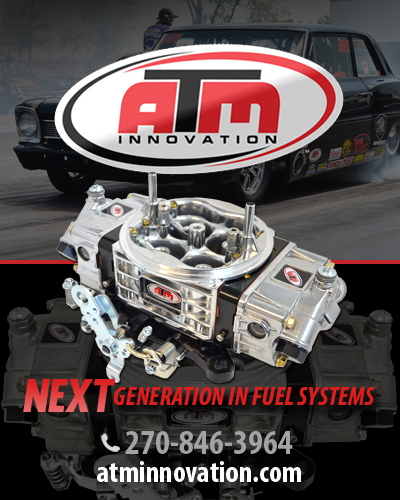



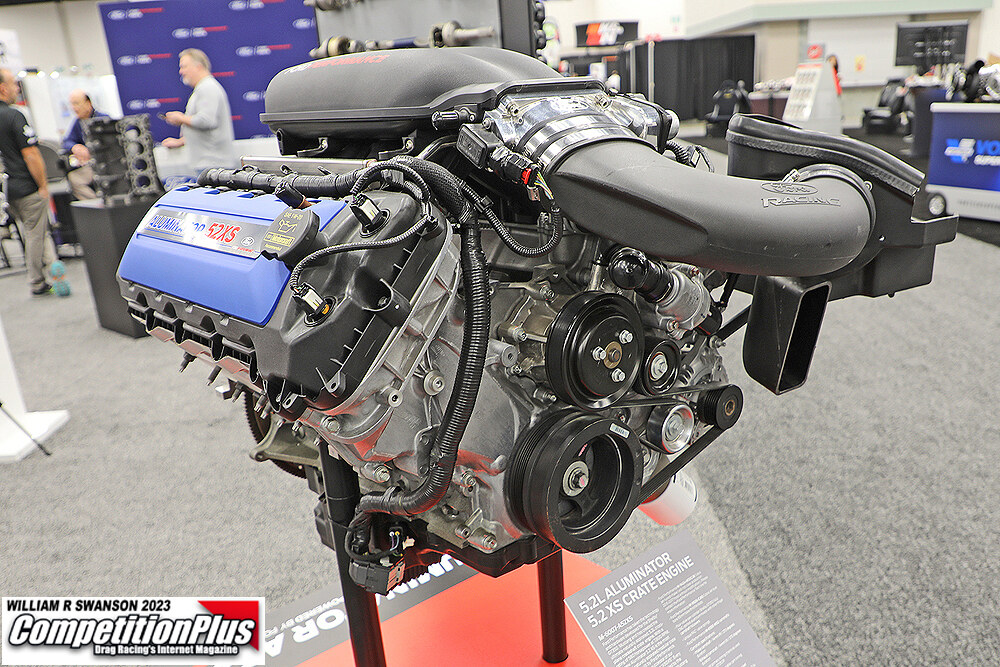

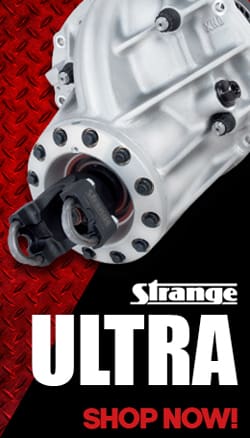








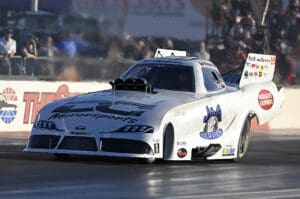
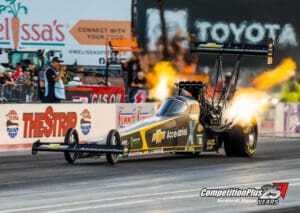
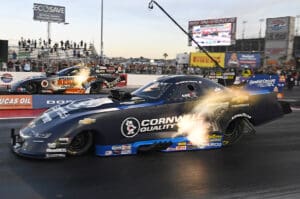

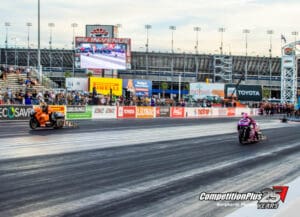
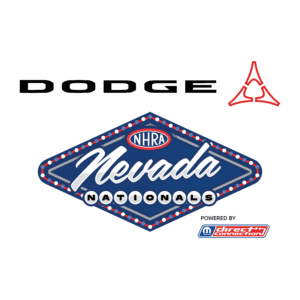

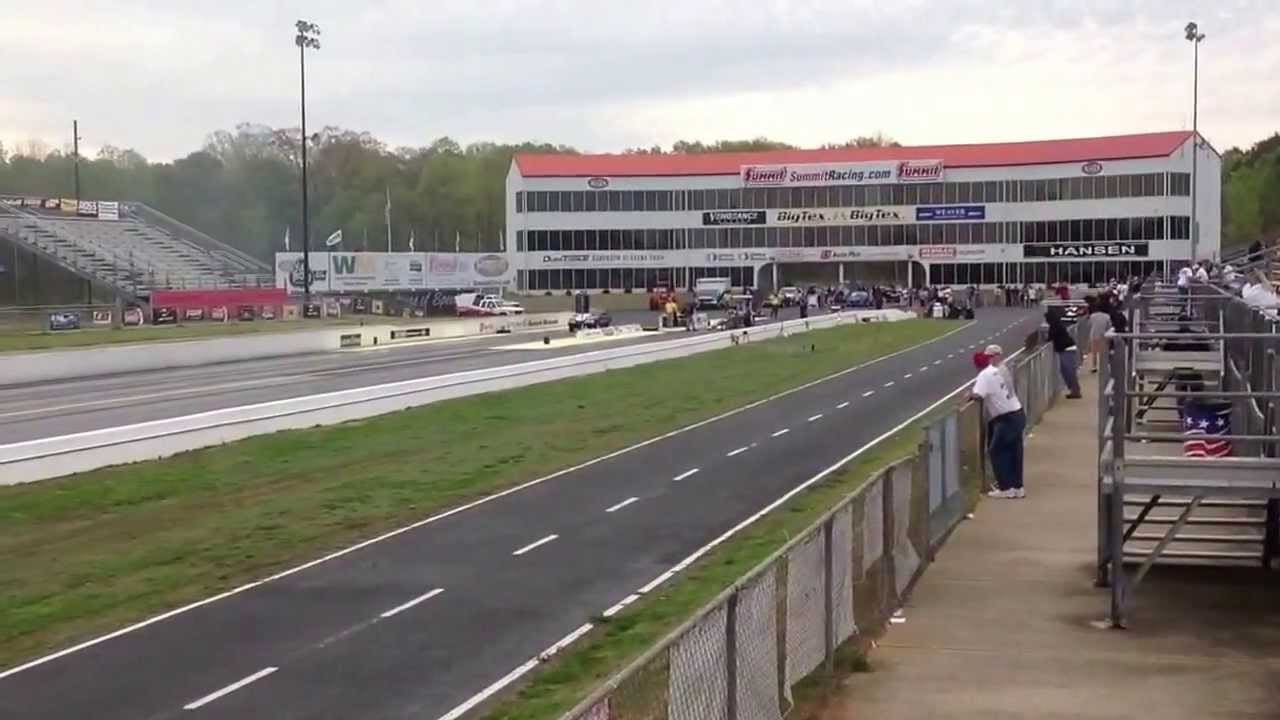
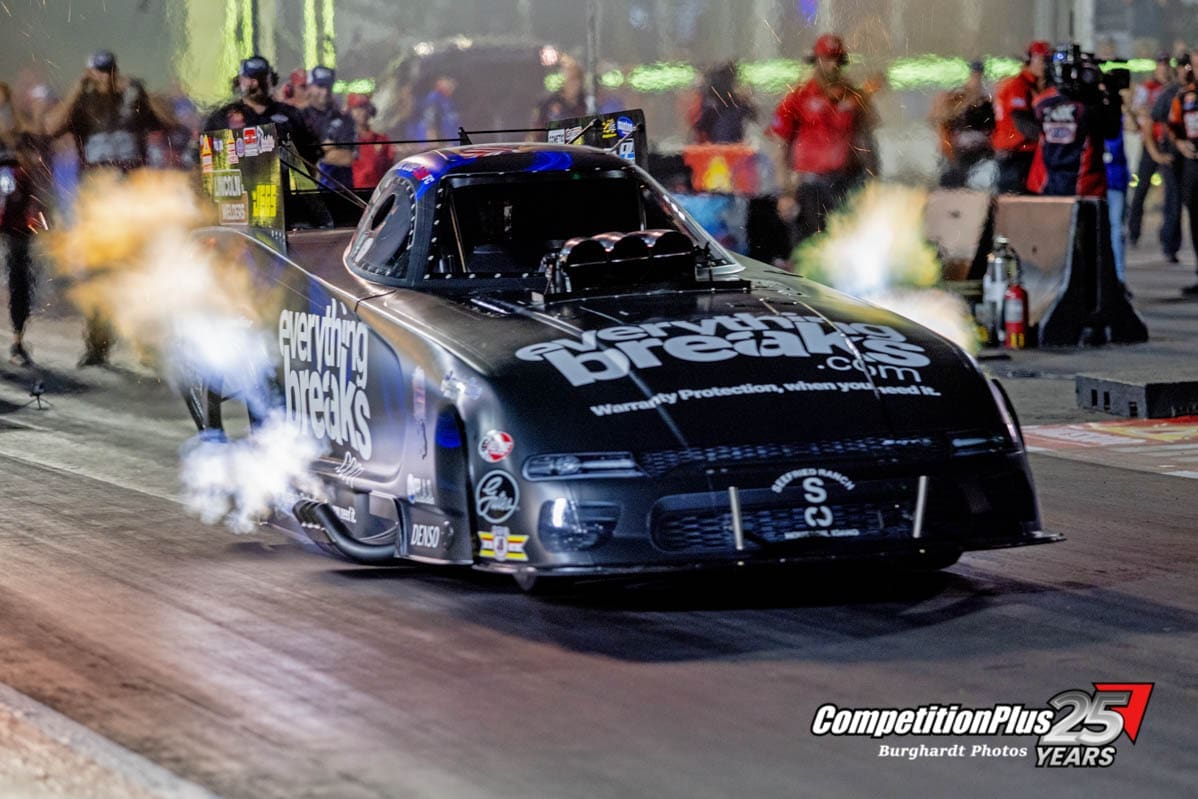
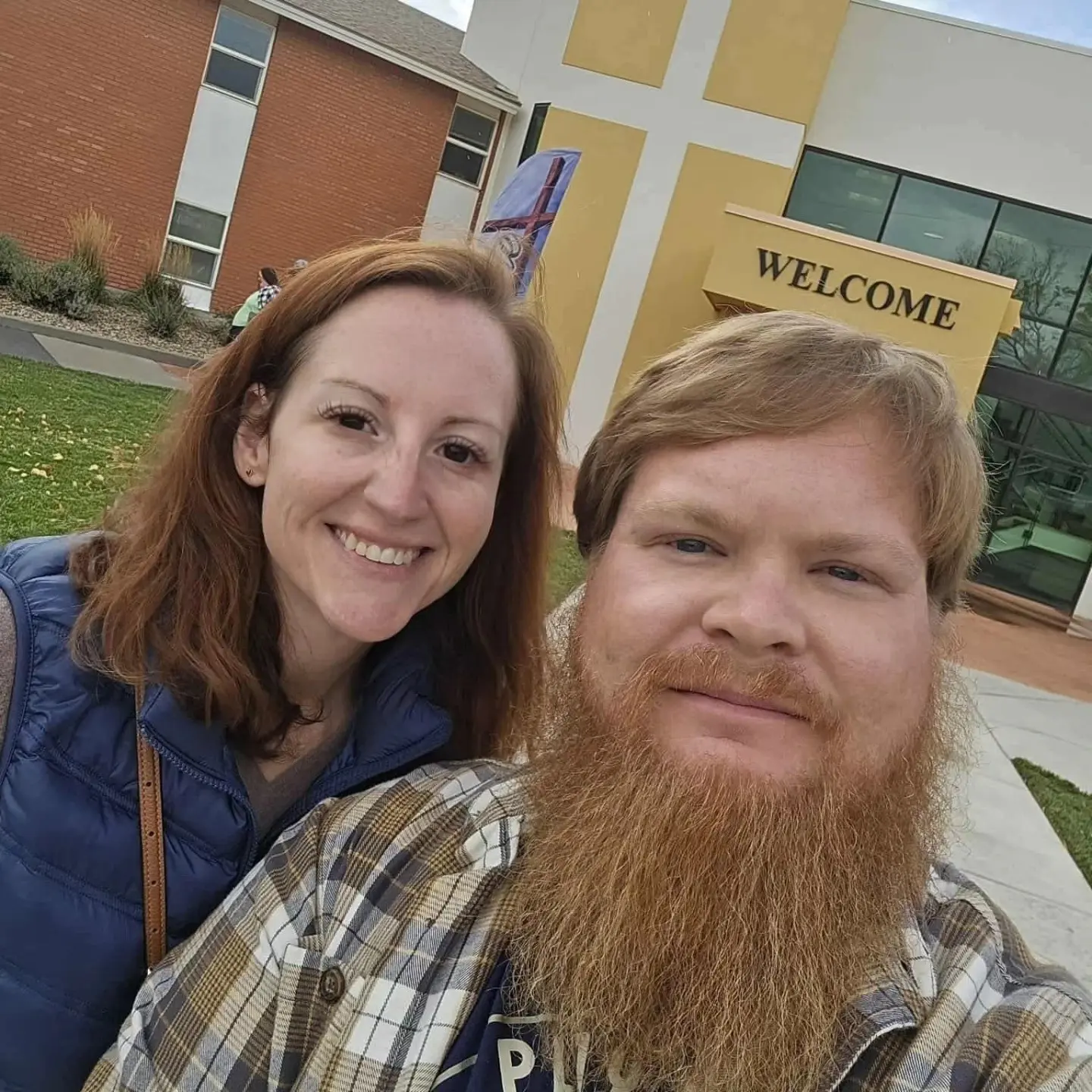
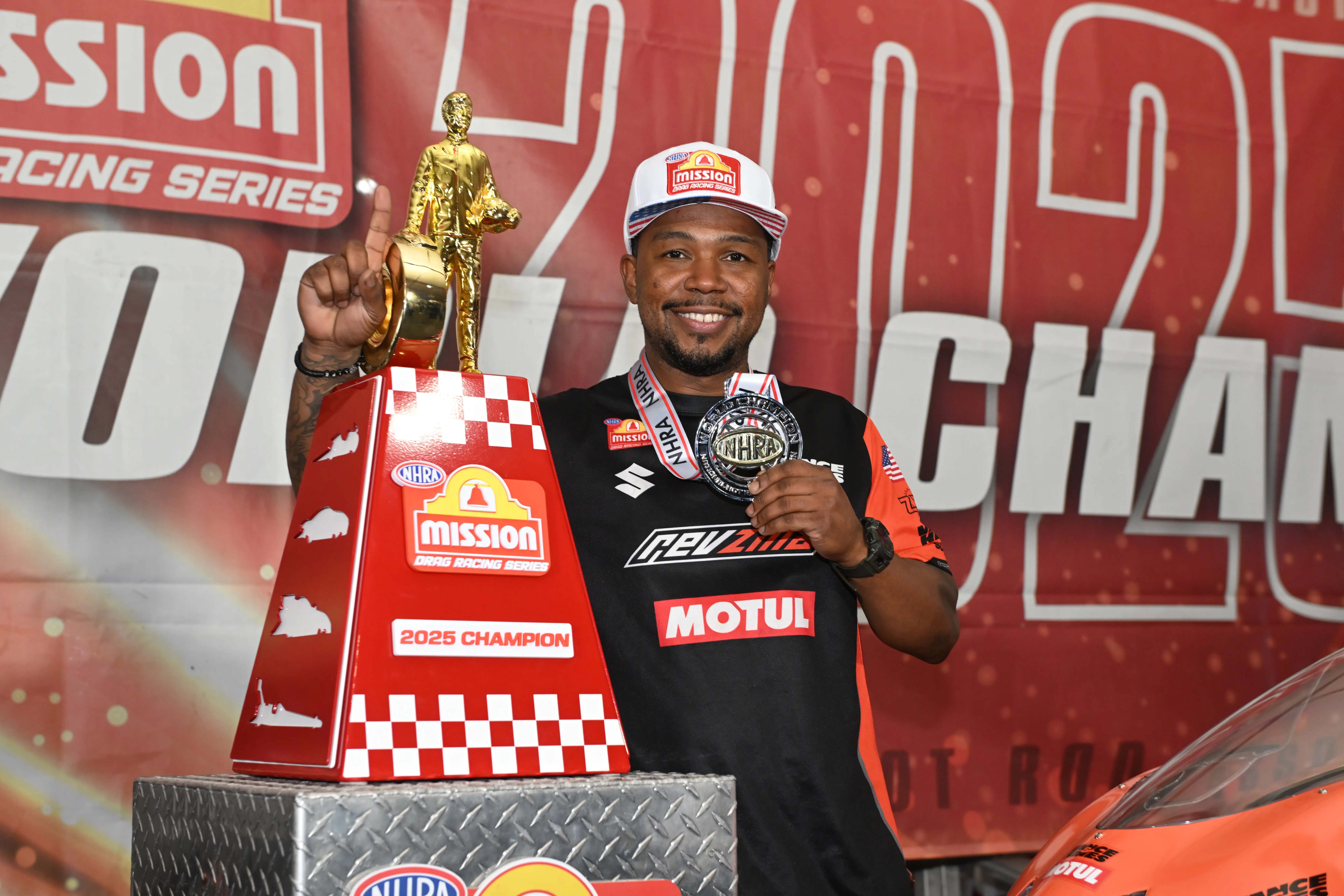

WHAT I AM THANKFUL FOR WITH FUNNY CAR BUDDY HULL